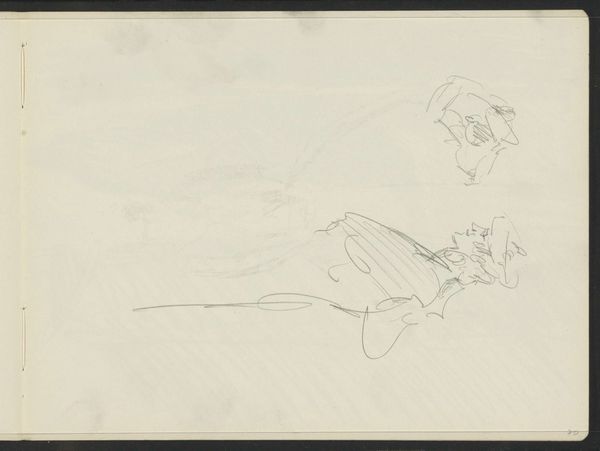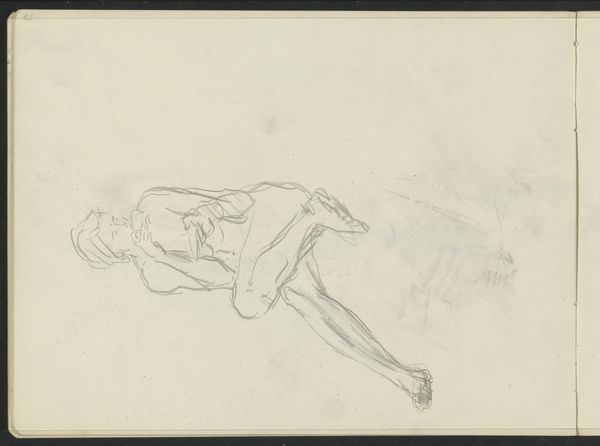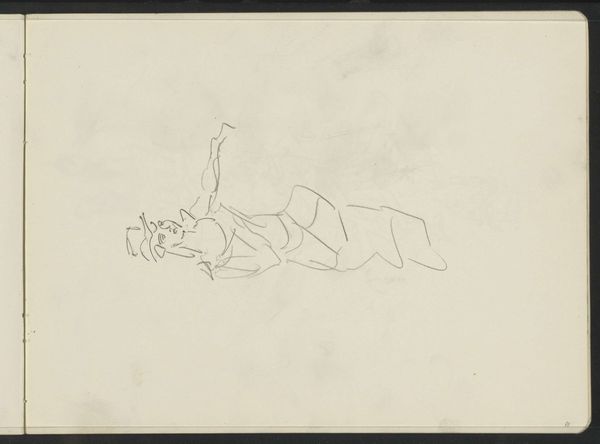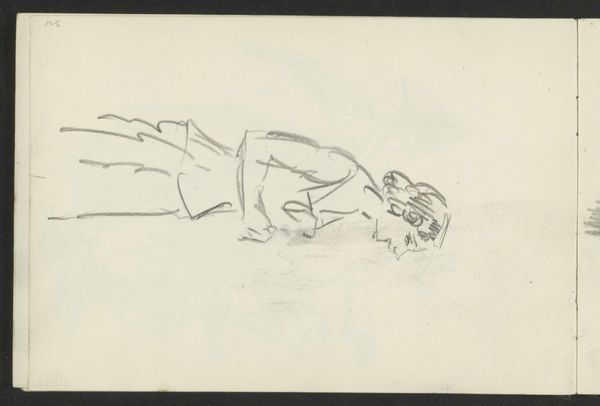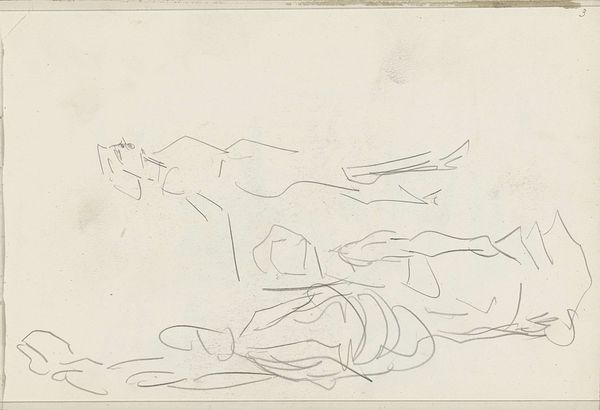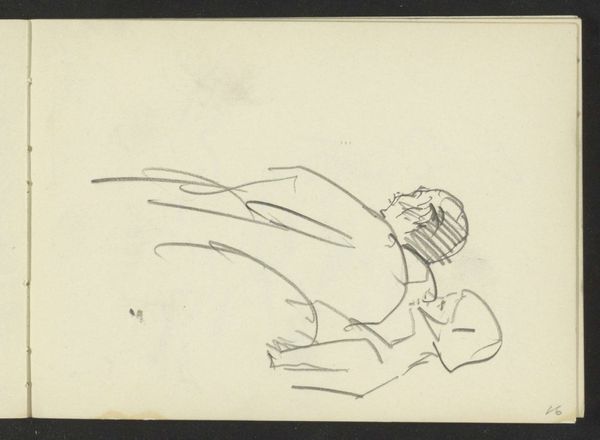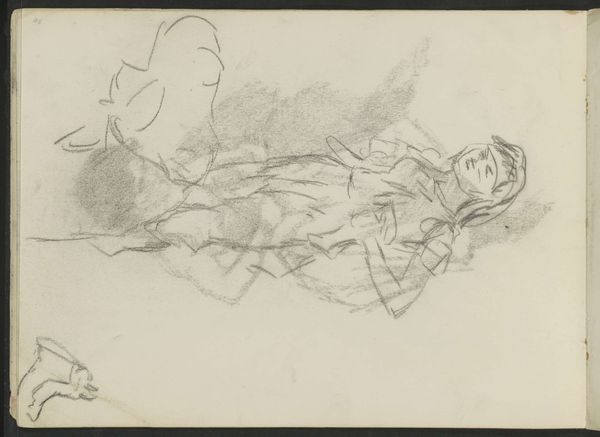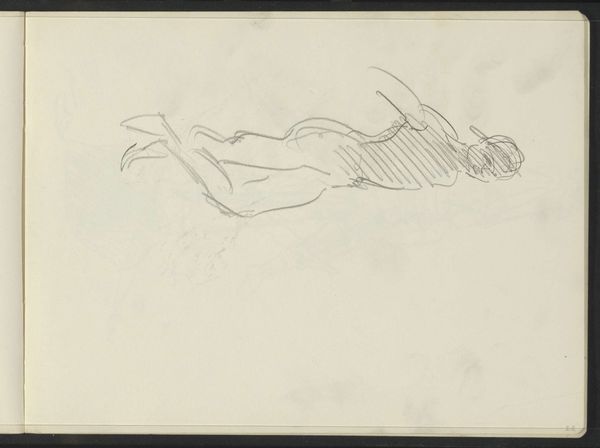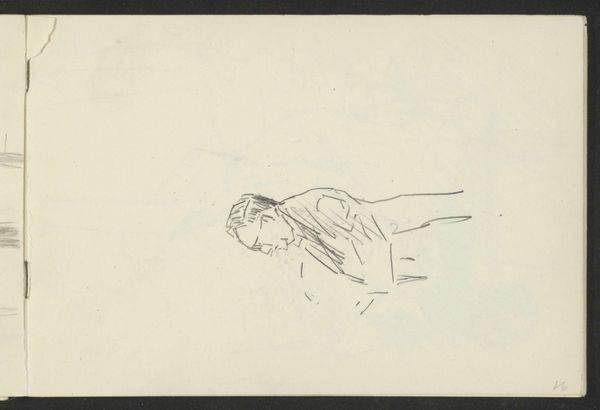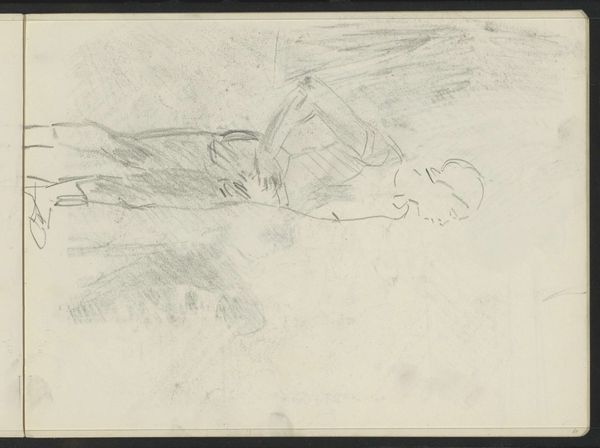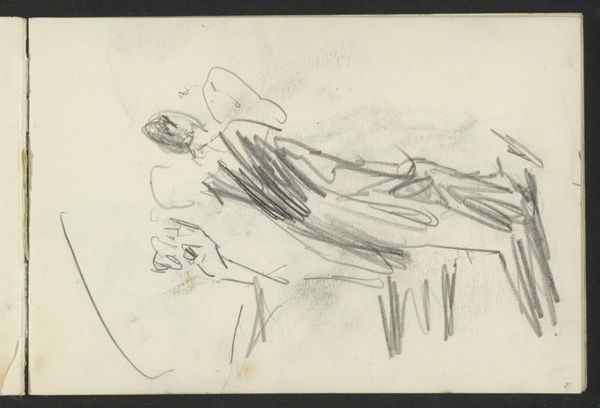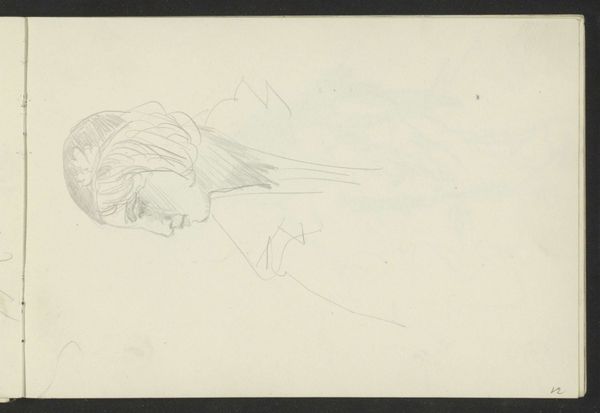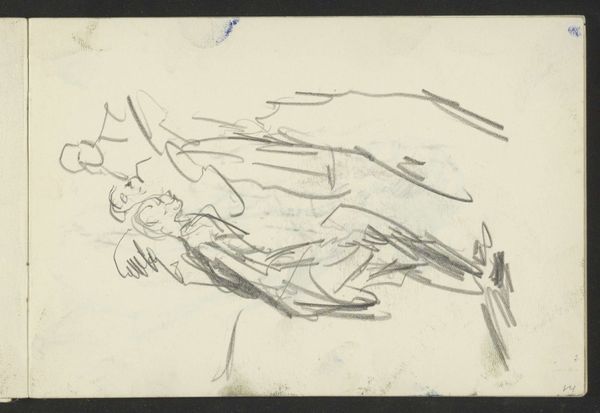
Copyright: Rijks Museum: Open Domain
Curator: This is a pencil drawing by Isaac Israels, titled "Standing Man in Frock Coat and Men's Heads." It was created sometime between 1875 and 1934, and now resides in the Rijksmuseum. Editor: My first impression? The image strikes me as intentionally sparse and transient, capturing movement in the way the marks don't quite solidify into static forms. The negative space seems very charged. Curator: Indeed. Israels was a master of impressionism, and this drawing beautifully captures his technique of suggesting form with a minimum of lines. We should also consider that he was working in a rapidly changing socio-political environment at the close of the 19th and beginning of the 20th century. There’s a palpable feeling of fleeting moments, of change on the horizon in this sketchbook page. Editor: Precisely! Look at how the diagonal strokes imply volume in the frock coat, and observe the variations in the lines that define the faces. It almost doesn't matter that the forms are incomplete—in many ways that actually contributes to its evocative quality, because each stroke serves an important function for the whole. It gives such emphasis to each one. Curator: That incompletion allows us to contemplate on how codes of dress, of class, were being formalized while simultaneously beginning to break down. We can see those tensions reflected in the confidence of the frock coat, against the almost spectral suggestions of the male heads. Were they on the verge of being forgotten even as they were recorded? The suggestion of form outweighs detail. Editor: You are correct; the very lack of completion becomes essential to its semiotic power. Consider too how Israels uses the subtle tonal gradations in the pencil work. Light and shadow seem to shift around these figures, contributing to the feeling of ephemeral existence. Curator: Thinking about the era in which it was made adds depth to that feeling of ephemerality; wars and changing social standards had immense effects on personal identity. A person standing in such attire at the turn of the century would embody both a remembered past and an uncertain future. Editor: A very incisive point. Reflecting on this drawing through my formalist lens, I see how the inherent properties and formal qualities work to make meaning. The piece reminds me that much can be said by showing rather than telling. Curator: And for me, the sketch shows how the boundaries of identity were simultaneously being asserted and questioned in his time. A seemingly simple drawing becomes rich when viewed through the complex lens of history and social change.
Comments
No comments
Be the first to comment and join the conversation on the ultimate creative platform.
